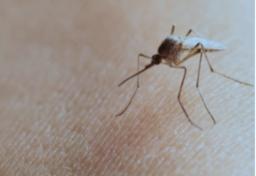Integrated Pest Management: A Comprehensive Approach to Effective Pest Control

Integrated Pest Management: A Comprehensive Approach to Effective Pest Control
Welcome to the ultimate guide on Integrated Pest Management (IPM)! If you're tired of battling pests in your home and seeking a long-term solution, IPM might just be the answer you've been looking for. In this comprehensive article, we'll delve into what IPM is, how it works, and why it's considered one of the most effective methods for pest control in South Africa.
First things first, let's clarify what Integrated Pest Management (IPM) entails. Unlike traditional pest control methods that rely heavily on chemical pesticides, IPM takes a holistic and multifaceted approach to pest control. Instead of simply treating the symptoms of a pest infestation, IPM focuses on addressing the root causes and preventing future problems.
IPM strategies incorporate a combination of techniques, including biological controls, habitat modification, and the judicious use of pesticides as a last resort. By combining various methods tailored to the specific needs of each situation, IPM aims to minimize the use of harmful chemicals while maximizing effectiveness.
One of the key principles of IPM is prevention. By identifying and addressing potential pest entry points, eliminating sources of food and water, and implementing proper sanitation practices, homeowners can significantly reduce the likelihood of pest infestations.
Another essential aspect of IPM is monitoring and regular inspections. By regularly monitoring for signs of pest activity, homeowners can detect problems early on and take proactive measures to prevent them from escalating into full-blown infestations.
Now that we've covered the basics of IPM, let's discuss how you can implement this approach in your own home. Start by conducting a thorough inspection of your property to identify any existing pest problems or potential risk factors.
Next, focus on implementing preventative measures to make your home less attractive to pests. This may include sealing cracks and crevices, repairing leaky pipes, storing food in airtight containers, and keeping your living spaces clean and clutter-free.
Consider incorporating natural predators or biological controls into your pest management strategy. For example, introducing certain types of beneficial insects or birds can help keep pest populations in check without the need for chemical pesticides.
When it comes to pesticide use, always opt for the least toxic option available and follow label instructions carefully. Limit pesticide applications to targeted areas and avoid overuse, which can lead to environmental contamination and harm to non-target organisms.
By adopting an Integrated Pest Management approach in your home, you can effectively control pests while minimizing the risks associated with traditional pest control methods. Remember, prevention is key, so don't wait until you have a pest problem to start implementing IPM strategies!

